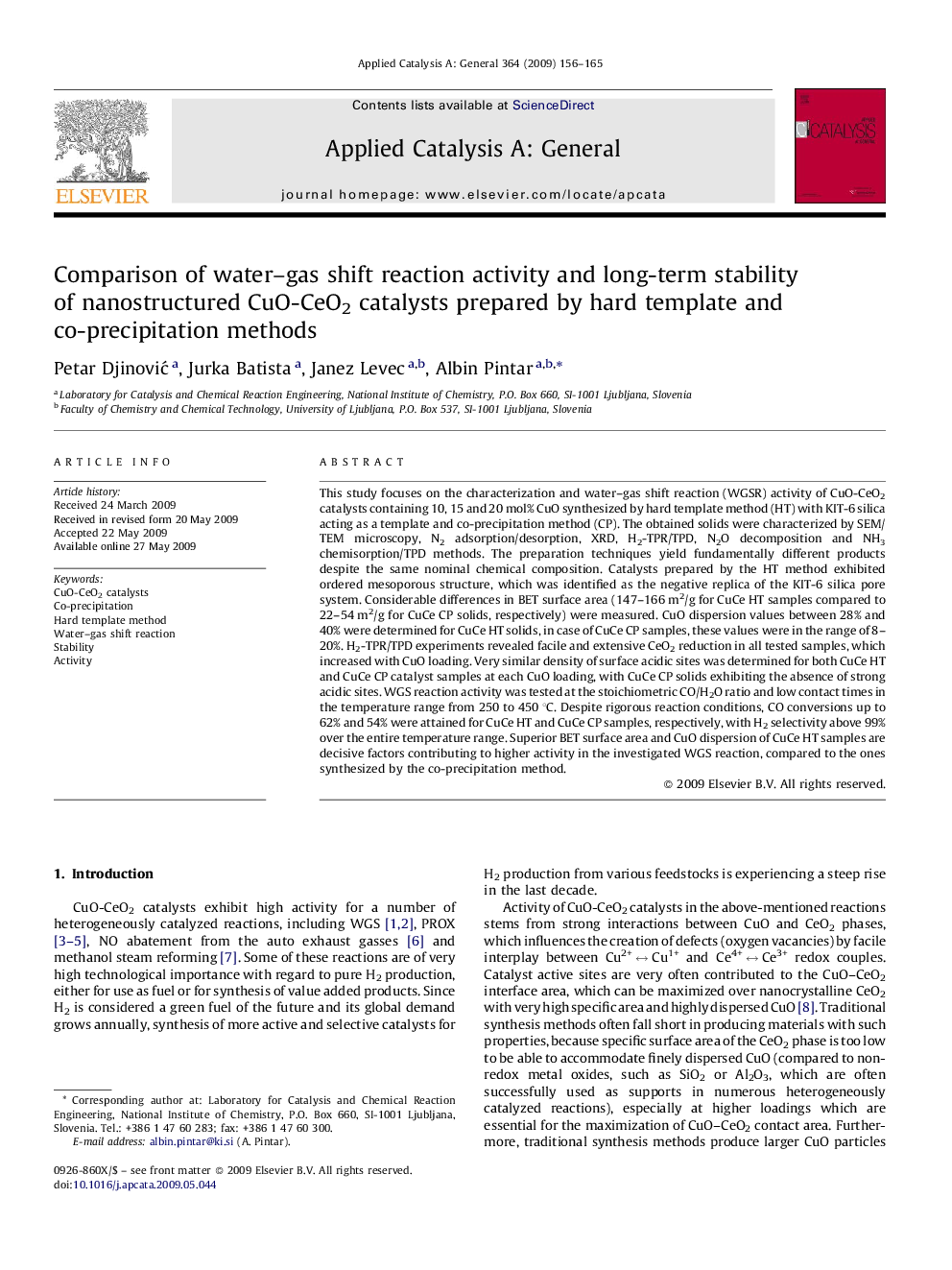| Article ID | Journal | Published Year | Pages | File Type |
|---|---|---|---|---|
| 42876 | Applied Catalysis A: General | 2009 | 10 Pages |
This study focuses on the characterization and water–gas shift reaction (WGSR) activity of CuO-CeO2 catalysts containing 10, 15 and 20 mol% CuO synthesized by hard template method (HT) with KIT-6 silica acting as a template and co-precipitation method (CP). The obtained solids were characterized by SEM/TEM microscopy, N2 adsorption/desorption, XRD, H2-TPR/TPD, N2O decomposition and NH3 chemisorption/TPD methods. The preparation techniques yield fundamentally different products despite the same nominal chemical composition. Catalysts prepared by the HT method exhibited ordered mesoporous structure, which was identified as the negative replica of the KIT-6 silica pore system. Considerable differences in BET surface area (147–166 m2/g for CuCe HT samples compared to 22–54 m2/g for CuCe CP solids, respectively) were measured. CuO dispersion values between 28% and 40% were determined for CuCe HT solids, in case of CuCe CP samples, these values were in the range of 8–20%. H2-TPR/TPD experiments revealed facile and extensive CeO2 reduction in all tested samples, which increased with CuO loading. Very similar density of surface acidic sites was determined for both CuCe HT and CuCe CP catalyst samples at each CuO loading, with CuCe CP solids exhibiting the absence of strong acidic sites. WGS reaction activity was tested at the stoichiometric CO/H2O ratio and low contact times in the temperature range from 250 to 450 °C. Despite rigorous reaction conditions, CO conversions up to 62% and 54% were attained for CuCe HT and CuCe CP samples, respectively, with H2 selectivity above 99% over the entire temperature range. Superior BET surface area and CuO dispersion of CuCe HT samples are decisive factors contributing to higher activity in the investigated WGS reaction, compared to the ones synthesized by the co-precipitation method.
Graphical abstractCharacterization and water–gas shift reaction (WGSR) activity of CuO-CeO2 catalysts synthesized by hard template (HT) and co-precipitation (CP) methods was studied. CO conversions up to 62% were attained, with H2 selectivity above 99%. Superior BET surface area and CuO dispersion of CuCe HT samples with an ordered mesoporous structure, are decisive factors contributing to higher WGS activity.Figure optionsDownload full-size imageDownload as PowerPoint slide
